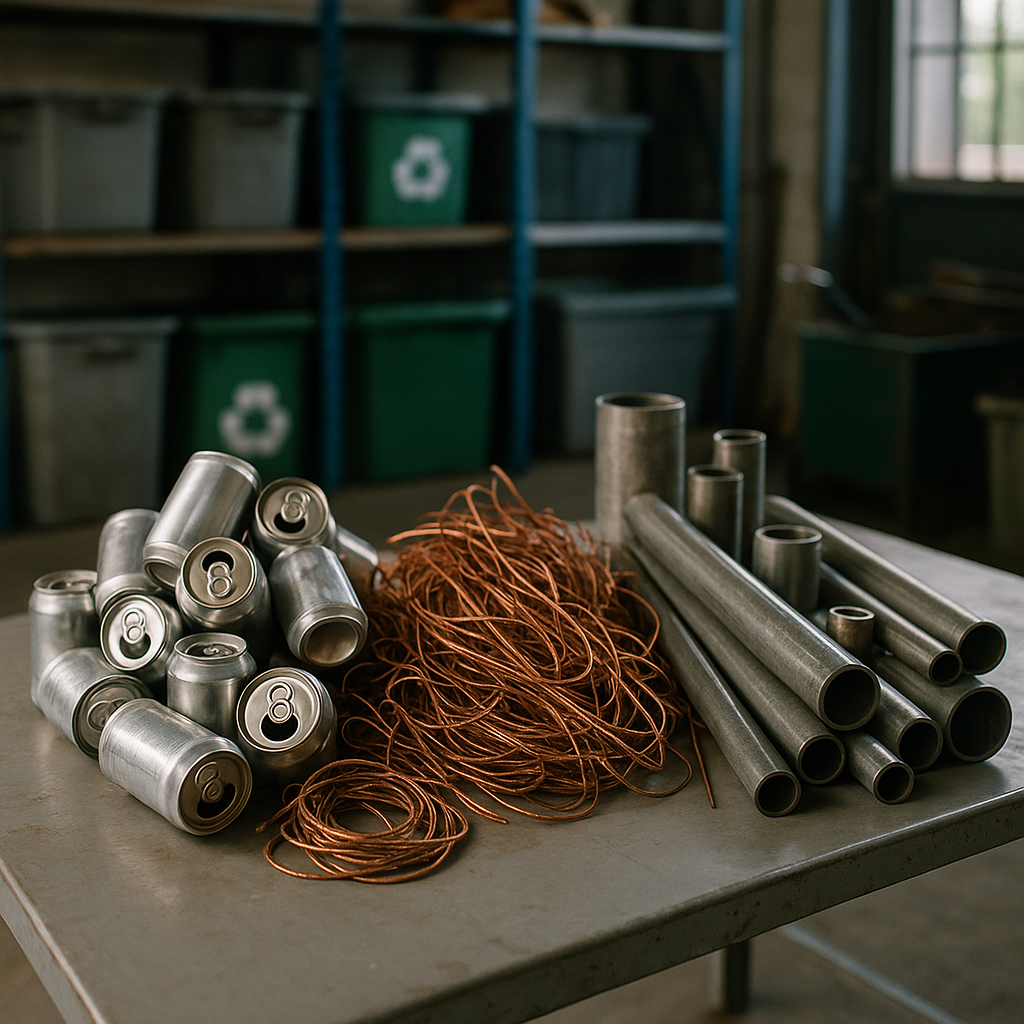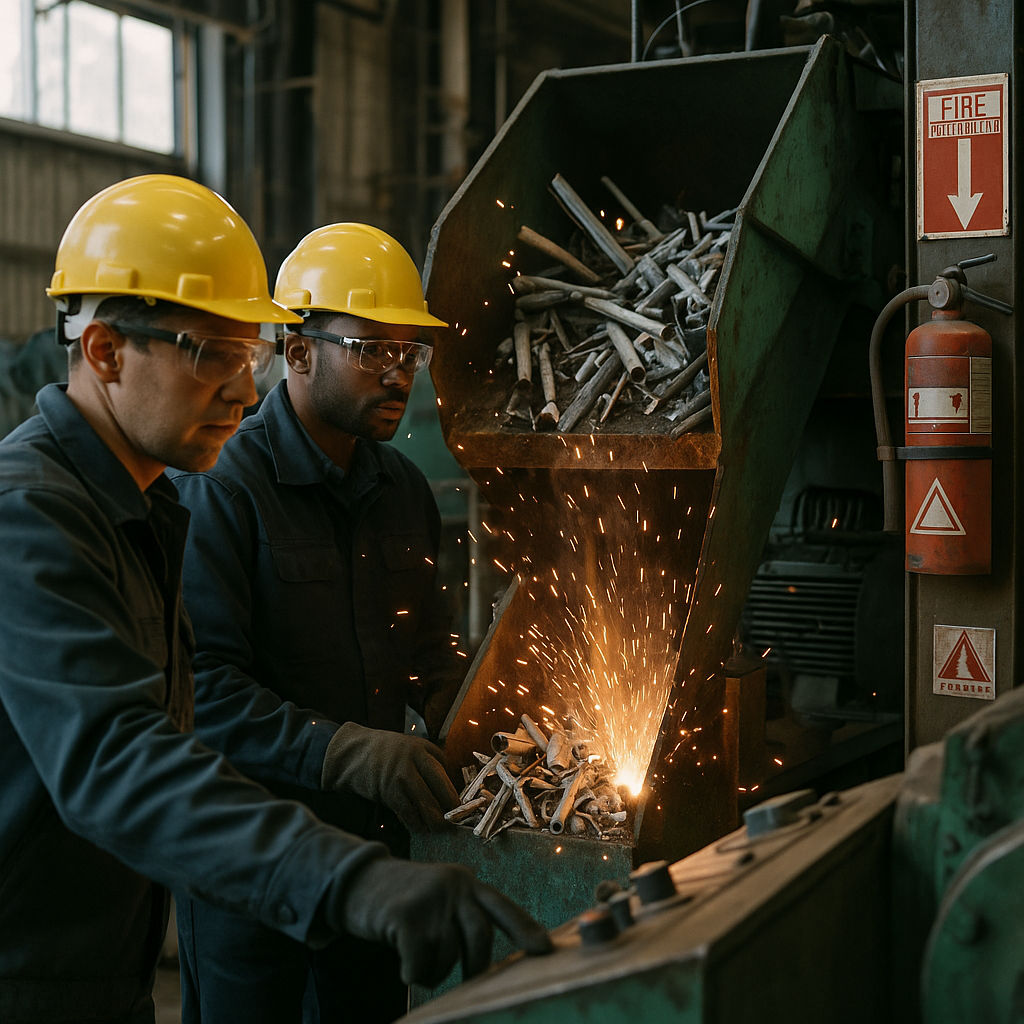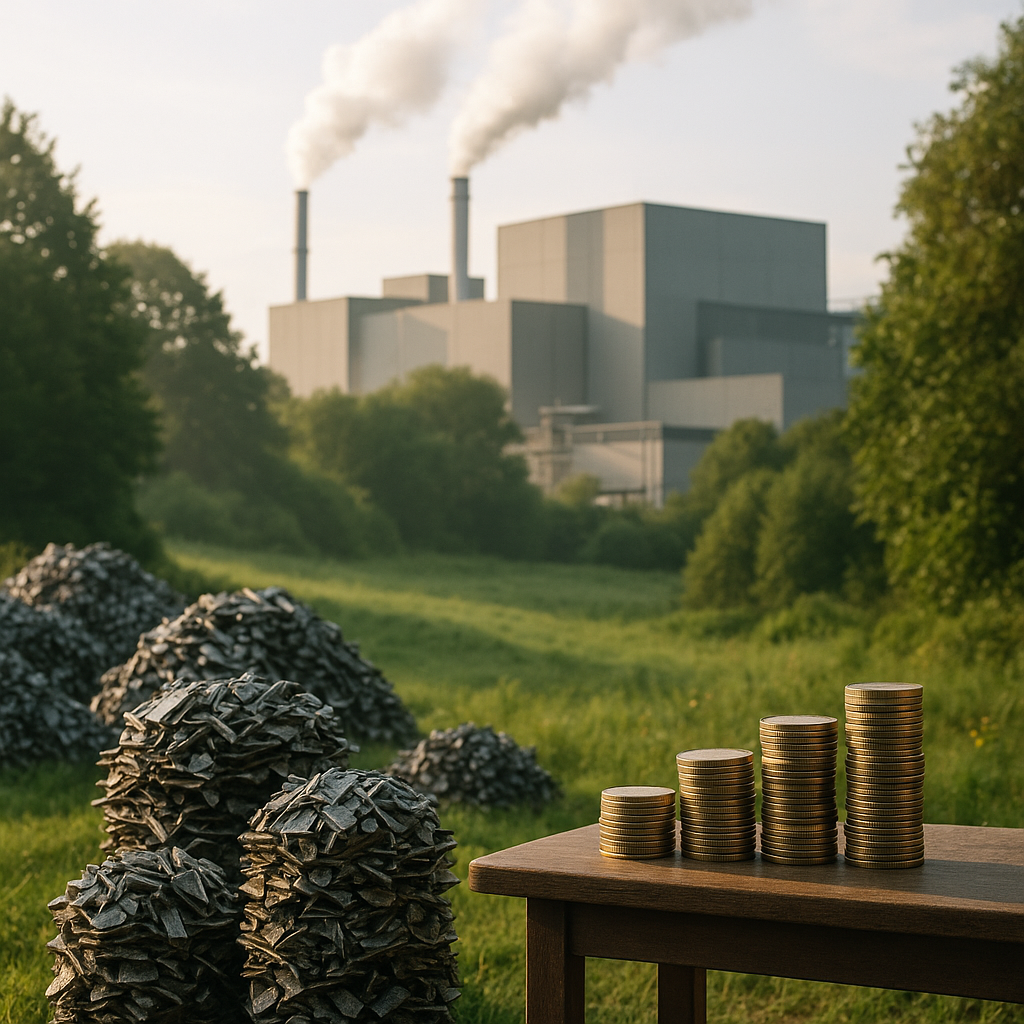5901 Botham Jean Blvd, Dallas, TX 75215
Metal Reclaim Explained: Steps, Benefits, and Economic Impact
September 24, 2025Metal reclaim transforms waste into valuable resources. This process, known as scrap metal recycling, involves collecting, sorting, and processing discarded metal materials to create reusable raw materials for manufacturing new products. From old appliances to construction debris, these materials contain metals that can be recovered and repurposed rather than ending up in landfills.
The importance of metal reclaim extends beyond waste reduction. By recycling metals instead of mining new ore, we conserve finite natural resources in Earth’s crust. The environmental impact is substantial—recycling aluminum saves up to 95% of the energy required to produce it from raw materials. For steel, energy savings range between 60-75%, resulting in significant reductions in greenhouse gas emissions.
Metal reclaim also makes economic sense. The scrap metal recycling industry generates over $117 billion in economic activity annually in the United States alone, supporting more than 500,000 jobs. For businesses, transforming waste disposal expenses into revenue streams creates immediate financial benefits while contributing to a more sustainable circular economy.
What Are the Main Types of Recyclable Metals?

Recyclable metals fall into two main categories: ferrous and non-ferrous. The key difference between these types is their iron content, which affects their properties, applications, and recycling processes.
Ferrous Metals
Ferrous metals contain iron as their primary component, making them magnetic and generally more susceptible to rust and corrosion due to their high carbon content. Steel is the most widely recycled ferrous metal globally, with the United States processing enough ferrous metal daily to build the equivalent of 25 Eiffel Towers.
Common ferrous metals include steel, cast iron, and wrought iron. Their strength and durability make them ideal for structural applications, with steel—comprised of over 90% iron—used in buildings, infrastructure, vehicles, tools, and household appliances.
Cast iron, with its higher carbon content, is commonly found in cookware, pipes, and machine parts. Its durability and heat retention properties make it particularly valuable for recycling.
Non-Ferrous Metals
Non-ferrous metals contain little or no iron. They are non-magnetic and typically offer better resistance to rust and corrosion than ferrous metals, often being more valuable in recycling markets due to their unique properties and applications.
Aluminum is one of the most commonly recycled non-ferrous metals; it can be recycled indefinitely without losing quality, using only 5% of the energy required to produce new aluminum. Common sources include beverage cans, window frames, siding, car parts, and kitchen foil.
Copper is another valuable non-ferrous metal, known for excellent electrical and thermal conductivity. Recycled copper retains up to 95% of its original value, found in electrical wiring, plumbing fixtures, and electronic components.
Other significant non-ferrous metals include brass (an alloy of copper and zinc, used in decorative items and plumbing fixtures), bronze (a mixture of copper and tin, used in sculptures and industrial applications), lead (used in batteries and radiation shielding), and zinc (found in die-castings and galvanized steel).
Importance of Metal Classification in Recycling
Understanding metal classification is crucial for effective recycling, as facilities use different processes for ferrous and non-ferrous metals. The simplest identification method is using a magnet; if it sticks, the metal contains iron and is classified as ferrous.
This classification also affects recycling value, with non-ferrous metals generally commanding higher prices per pound than ferrous metals, which are traded by the ton. This price difference reflects their relative scarcity, recyclability, and specialized applications.
Recycling both metal types offers significant environmental benefits by reducing the need to mine raw materials, conserving energy, and decreasing greenhouse gas emissions. For example, recycling steel saves enough energy to power millions of homes annually, while recycling aluminum uses 95% less energy than producing it from bauxite ore.
How Does the Metal Reclaim Process Work?

Metal reclamation transforms discarded scrap into valuable resources ready for reuse. This process conserves natural resources and uses approximately 75% less energy than producing metals from virgin materials. The reclaim process follows several steps to convert various types of scrap metal into purified materials ready for manufacturing.
The metal reclaim process typically involves six main steps:
- Collection: Scrap metals are gathered from sources such as industrial scraps, old vehicles, construction sites, and consumer waste. These metals are placed in specialized containers before transport to recycling facilities.
- Sorting: Collected scrap is separated into categories based on metal type. Ferrous metals (containing iron) are separated from non-ferrous metals using powerful magnets. Further sorting examines color, weight, and other physical properties to identify specific metal types like aluminum, copper, zinc, or lead.
- Processing: The sorted metals are cut, shredded, or crushed into smaller pieces. This step uses equipment such as hammer mills, shears, and hydraulic machinery to reduce large metal pieces to manageable sizes. Smaller pieces create a larger surface-to-volume ratio, aiding the melting process.
- Melting: The processed metal is placed in specialized furnaces designed for specific metal types, each requiring different temperature settings due to varying melting points. This stage can take from minutes to hours, depending on the furnace size, heat intensity, and metal volume.
- Purification: The molten metal undergoes purification to remove contaminants and ensure high-quality output. Common methods include electrolysis, where an electric current passes through the metal, causing pure metal to deposit at the cathode while impurities settle as “anode mud.” For some metals, chemicals or gases are added to adjust composition to meet specific standards.
- Solidification: The purified molten metal is formed into various shapes for transportation and manufacturing use. It may be cast into ingots, billets, rods, or sheets, depending on its intended use. These standardized forms make it easier for manufacturers to incorporate the reclaimed metal into new products.
Once the process is complete, these reclaimed metals are indistinguishable from metals produced through primary ore processing. Manufacturers purchase the reclaimed metals to create new products, completing the recycling loop and fostering a sustainable materials economy.
For specialty metals like titanium, magnesium, or precious metals, additional steps or modifications to the standard process may be required. The exact procedures can vary based on the metal type, facility capabilities, and end-product requirements.
The metal reclaim industry is substantial, generating billions in revenue annually while creating jobs and reducing environmental impact from mining operations. Properly reclaimed metals can be recycled repeatedly without degrading their properties, making metal recycling a highly successful form of material recovery.
What Are the Environmental and Economic Benefits of Metal Reclaim?
Environmental Advantages of Metal Recycling
Metal reclaim is one of our most effective tools for conserving resources. By recycling metals instead of mining for virgin ore, we significantly reduce habitat destruction, soil erosion, and water pollution. This conservation approach preserves ecosystems that would otherwise suffer from extractive mining operations.
The energy savings from metal recycling are substantial. Recycling aluminum saves up to 95% of the energy required to produce new aluminum from raw materials. Steel recycling offers similar benefits, significantly reducing energy consumption. These savings directly translate to lower greenhouse gas emissions.
According to the U.S. Environmental Protection Agency, recycling and composting cut greenhouse gas emissions by more than 186 million metric tons of carbon dioxide in a single year. The Institute of Scrap Recycling Industries reports that metal recycling can reduce greenhouse gas emissions by up to 500 million tons annually.
Another crucial environmental benefit is water conservation. The National Institutes of Health has noted that recycling metal uses up to 40% less water compared to virgin material production. This reduction is crucial as water scarcity becomes an increasing global concern.
Metal reclaim also plays a vital role in reducing landfill waste. Metals do not degrade in landfills and can occupy valuable space for hundreds or thousands of years. Some scrap metals contain hazardous substances like lead and mercury, which can leach into soil and groundwater. By diverting these materials from landfills, recycling prevents these toxic substances from contaminating our environment.
Economic Benefits of Metal Reclaim
The economic impact of metal recycling extends across the economy. The scrap metal recycling industry generates nearly $117 billion in annual economic benefits for the U.S. economy. This substantial economic activity creates jobs across the collection, processing, and manufacturing sectors.
Job creation is one of the most significant economic advantages. According to the Institute of Scrap Recycling Industries, the recycling industry directly supports more than 159,640 jobs through recycling and brokerage operations. Overall, the industry supports over 506,000 jobs in the United States, contributing about $5 billion annually in revenue for local governments.
For businesses, metal recycling offers cost savings and potential revenue. Manufacturing with recycled metals reduces production expenses since recycled materials are generally less expensive than virgin resources. Companies can also earn income by selling their manufacturing scrap metal waste instead of paying disposal fees.
The scrap metal recycling industry creates 36 times more jobs than sending metal waste to incinerators and six times more than disposing of it in landfills. This employment multiplier effect strengthens local economies while supporting environmental goals.
Metal reclaim also provides stability to manufacturing supply chains. By offering a reliable domestic source of raw materials, recycling reduces dependency on imported metals and buffers against market volatility. This stability contributes to resource security and enhances national economic resilience.
Supporting a Circular Economy
Metal recycling is a cornerstone of the circular economy model. Unlike many materials, metals can be recycled repeatedly without significant degradation in quality. This endless recyclability makes scrap metal an invaluable resource that can be continually reintroduced into manufacturing processes.
According to the Institute of Scrap Recycling Industries, 70% of materials processed by the U.S. recycling industry annually are used in American manufacturing. This circularity reduces waste, conserves resources, and strengthens domestic manufacturing capabilities.
For businesses aiming to meet sustainability goals, metal recycling provides a clear path to demonstrating environmental responsibility. Companies can document their contribution to resource conservation, energy savings, and emissions reduction through participation in metal recycling programs.
Metal reclaim helps companies meet sustainability goals set by the United Nations as part of their commitment to environmental protection and responsible resource management. This alignment with global sustainability frameworks enhances corporate reputations and supports compliance with increasing environmental regulations.
Conclusion: The Future of Metal Reclaim

The future of metal reclaim is at a crucial intersection of environmental responsibility and economic opportunity. With global metal demand continuously rising, recycling provides a sustainable alternative to primary production. The circular economy model transforms what was once considered waste into valuable resources, conserving natural resources and delivering substantial energy savings—up to 95% for aluminum and 75% for steel compared to virgin material production.
Technological innovations are improving the metal recycling industry. AI-driven sorting systems, blockchain technology for supply chain transparency, and advanced recovery processes are making recycling more efficient and effective. These advancements are vital for increasing recycling rates, especially for metals with currently low recovery percentages. As these technologies become more accessible, we can expect significant growth in the metal reclaim sector, creating new opportunities for businesses and communities alike.
For your metal recycling needs and to contribute to a more sustainable future, contact Okon Recycling at 214-717-4083.
